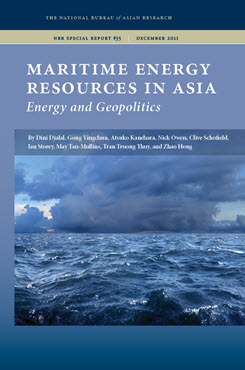The Declaration on the Conduct of Parties in the South China Sea and Developing Maritime Energy Resources
This essay focuses on opportunities created by the Declaration on the Conduct of Parties in the South China Sea (DoC) for developing maritime energy resources in the region, examines the formulation of the DoC, analyzes why the implementation of the DoC has been incomplete, and makes some solution-oriented suggestions for implementing the DoC and promoting regional security and cooperation.
EXECUTIVE SUMMARY
This essay focuses on opportunities created by the Declaration on the Conduct of Parties in the South China Sea (DoC) for developing maritime energy resources in the region, examines the formulation of the DoC, analyzes why the implementation of the DoC has been incomplete, and makes some solution-oriented suggestions for implementing the DoC and promoting regional security and cooperation.
MAIN ARGUMENT
As the most powerful country in the region, China sets the tone for the situation in the South China Sea. After Beijing adopted a more accommodating stance in the South China Sea disputes, a DoC was reached. The DoC was signed to provide the foundation for long-term stability in the area and foster understanding among the countries concerned. Developments in the South China Sea since the signing of the DoC reaffirmed the limits of the declaration in preventing the escalation of tensions and the occurrence of skirmishes and other incidents in the region. Although the DoC does not directly mention possible cooperative activities to develop energy resources in the South China Sea, it opens opportunities for such provisional arrangements. As demonstrated by the Agreement for Joint Marine Seismic Undertaking in the South China Sea in 2005, finding an area for cooperative activities to develop energy resources and agreeing to a formula of governing relations between concerned parties remain the most intractable problems for putting the ideas in the DoC into practice.
POLICY IMPLICATIONS
- To find an area acceptable to all concerned parties for joint development, all claimants in the South China Sea disputes should reach a consensus on the regime of features of the Paracel and Spratly Islands that regards the disputed islands as no more than rocks.
- All concerned countries should agree to create a continental shelf “doughnut” in the central part of the South China Sea that is open for cooperative development of maritime energy resources.
- Successful implementation of the DoC and a binding regional code of conduct accepted by China would prevent smaller parties from being intimidated, making them more confident to proceed with cooperative development of maritime resources in the South China Sea.


